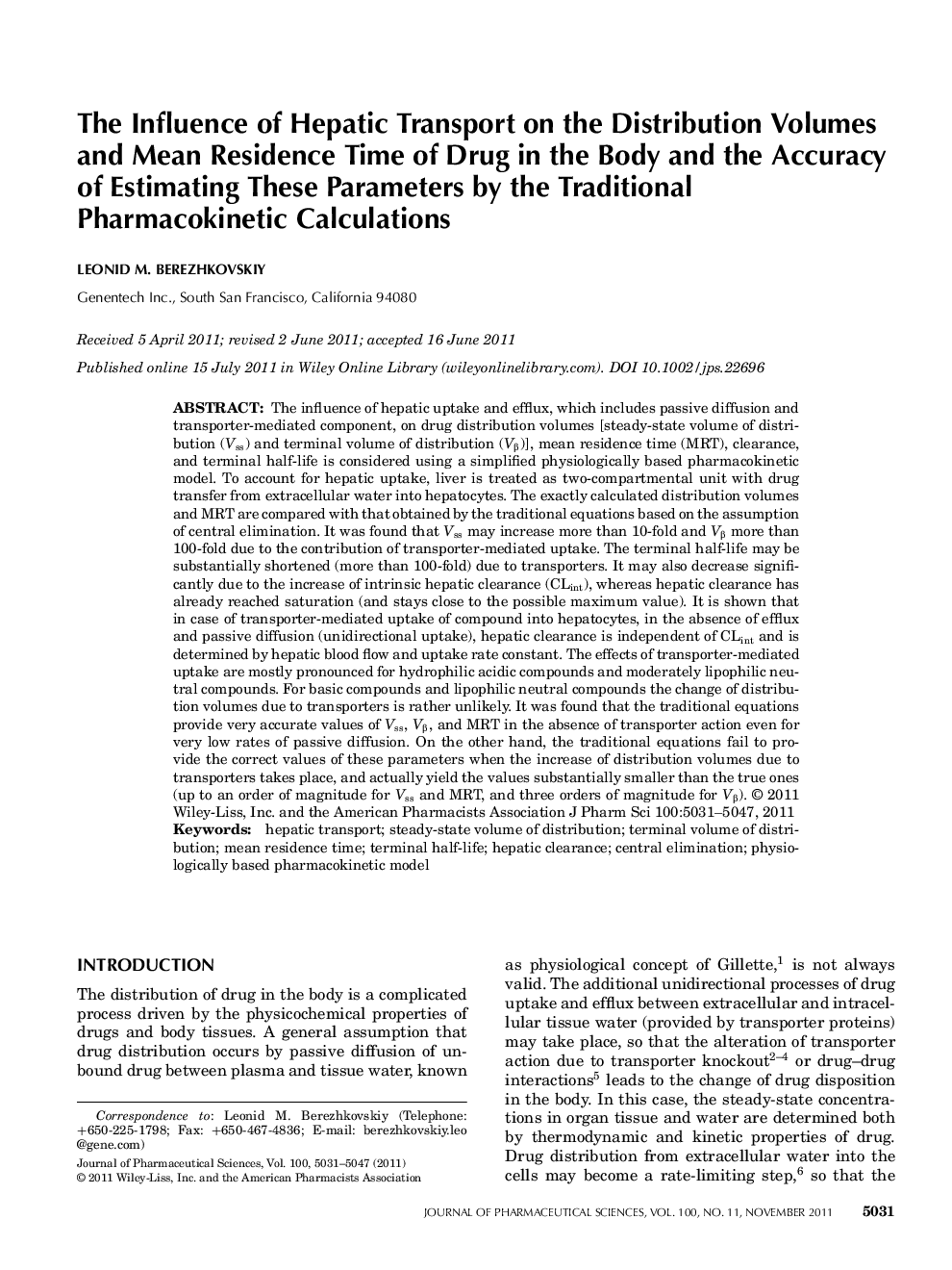| Article ID | Journal | Published Year | Pages | File Type |
|---|---|---|---|---|
| 2486201 | Journal of Pharmaceutical Sciences | 2011 | 17 Pages |
Abstract
The influence of hepatic uptake and efflux, which includes passive diffusion and transporterâmediated component, on drug distribution volumes [steadyâstate volume of distribution (Vss) and terminal volume of distribution (Vβ)], mean residence time (MRT), clearance, and terminal halfâlife is considered using a simplified physiologically based pharmacokinetic model. To account for hepatic uptake, liver is treated as twoâcompartmental unit with drug transfer from extracellular water into hepatocytes. The exactly calculated distribution volumes and MRT are compared with that obtained by the traditional equations based on the assumption of central elimination. It was found that Vss may increase more than 10âfold and Vβ more than 100âfold due to the contribution of transporterâmediated uptake. The terminal halfâlife may be substantially shortened (more than 100âfold) due to transporters. It may also decrease significantly due to the increase of intrinsic hepatic clearance (CLint), whereas hepatic clearance has already reached saturation (and stays close to the possible maximum value). It is shown that in case of transporterâmediated uptake of compound into hepatocytes, in the absence of efflux and passive diffusion (unidirectional uptake), hepatic clearance is independent of CLint and is determined by hepatic blood flow and uptake rate constant. The effects of transporterâmediated uptake are mostly pronounced for hydrophilic acidic compounds and moderately lipophilic neutral compounds. For basic compounds and lipophilic neutral compounds the change of distribution volumes due to transporters is rather unlikely. It was found that the traditional equations provide very accurate values of Vss, Vβ, and MRT in the absence of transporter action even for very low rates of passive diffusion. On the other hand, the traditional equations fail to provide the correct values of these parameters when the increase of distribution volumes due to transporters takes place, and actually yield the values substantially smaller than the true ones (up to an order of magnitude for Vss and MRT, and three orders of magnitude for Vβ). © 2011 WileyâLiss, Inc. and the American Pharmacists Association J Pharm Sci 100:5031-5047, 2011
Keywords
Related Topics
Health Sciences
Pharmacology, Toxicology and Pharmaceutical Science
Drug Discovery
Authors
Leonid M. Berezhkovskiy,
